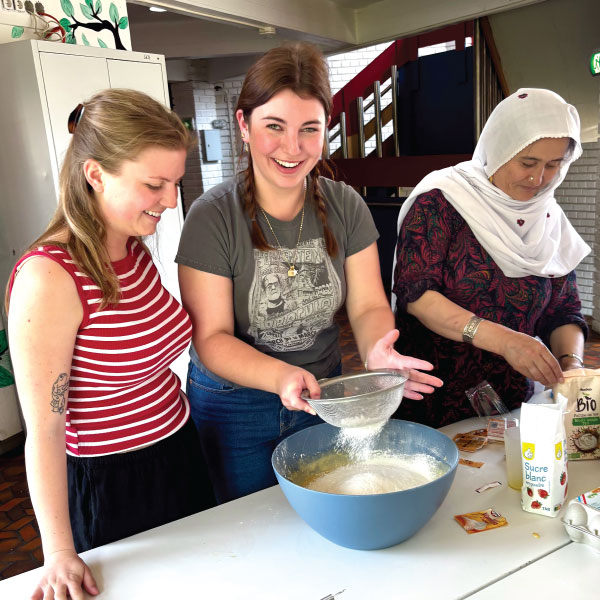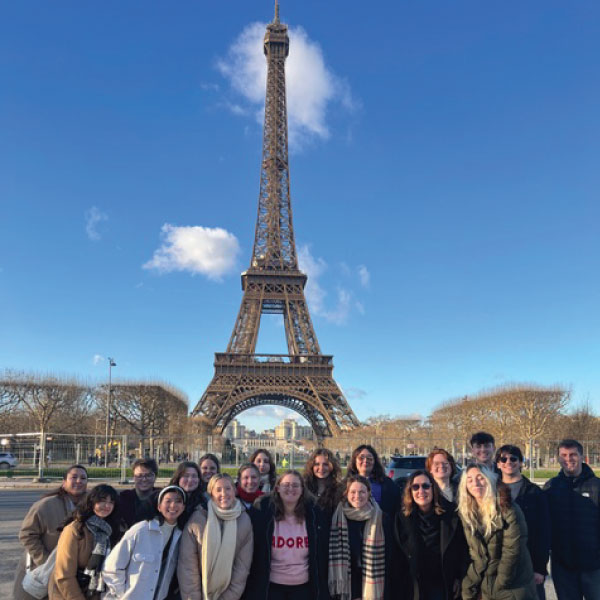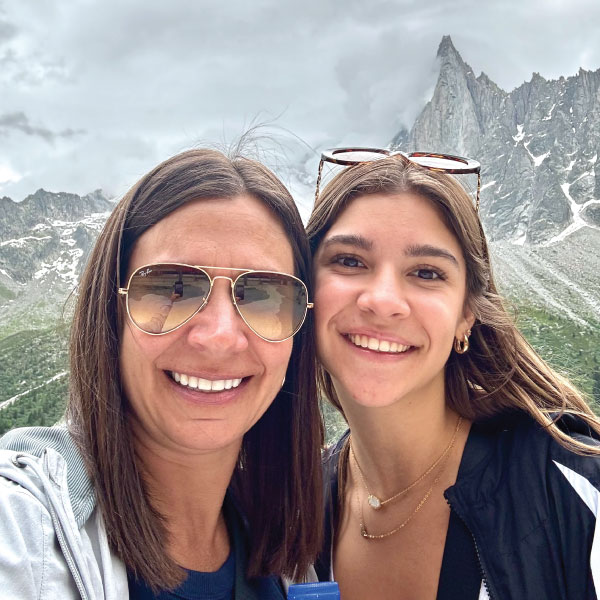Study abroad opportunities augment classroom teaching, provide life-changing experiences
Regional campus faculty and students discuss their cross-cultural perspectives
Study abroad opportunities augment classroom teaching, provide life-changing experiences

Increasingly, study abroad programs are becoming a vital part of that mission.
Study abroad isn’t just about travel. It’s about applying classroom learning to real-world contexts, often in ways that extend far beyond campus. Nursing majors gain insight into global healthcare systems. Business students experience international markets firsthand. Art majors encounter different artistic traditions, techniques, and audiences, broadening their practice and world view. Each experience ties academic theory to lived practice.
For one faculty member, study abroad was a life-changing experience.
“I studied abroad as an undergraduate, and it ended up shaping my career,” said Elisabeth Hodges, professor of French and interim chair of English. “I find teaching abroad truly rewarding and very different from the experience of in-class teaching.”

Cross-cultural perspectives in Paris
Hodges and a colleague developed the program, Paris Cultural Capital, in 2014 as a way to investigate the significance of Paris as a space of artistic and cultural innovation from cross-cultural perspectives. It pairs seminars with on-location investigation through special assignments designed to prompt further examination of the texts and contexts through group and individual work in cultural spaces and the city itself.
“The pace is demanding and requires excellent organizational skills to manage the workload,” said Hodges, “but it is also rewarding insofar as it offers students continuous feedback on their work and opportunities to reflect upon their experience.”
Aubree Peterson, an online English Studies major, recently completed the program, and called it transformative.
“I learned so much about the different authors who lived in Paris as well as learning about one of the most famous book stores in the world, ‘Shakespeare and Company,’” Peterson said. “This allowed me to better see how real-life authors once lived and where they got inspired for their stories.
“In Paris, there are so many different people from all over the world in one city, and it was so fun to talk to people and learn their stories and cultures. It has inspired me to travel as much as I can and take more chances in life,” said Peterson, who now plans to become a professor in hopes of one day leading her own study abroad trips.

Different doesn’t mean better or worse
Miami University’s campus in Luxembourg was a natural choice for another program, Caregiving in Crisis: Humanitarian Aid in Luxembourg. According to Anna Ressler, assistant professor in the Department of Nursing, its central location allowed students to experience several countries within a few hours by train.
“We partnered with Médecins Sans Frontières in Luxembourg to participate in a Mapathon,” Ressler said. “Students used satellite imagery to map roads and huts, directly supporting aid workers in reaching remote communities. This wasn’t just learning about humanitarian work, it was stepping into the role of an aid worker, even if just for a day.”
One of the group's most profound experiences came during a visit to Helluf um Terrain, a refugee center in Luxembourg.
“We expected to participate in a service project, thinking we were preparing meals, but instead, the refugees welcomed us into their world through food. They cooked traditional dishes, brewed teas and coffees, and shared desserts that carried deep cultural meaning,” Ressler said.
“What struck me most was their generosity. They had so little yet gave so much. At one point, the director even asked them to stop bringing food because they were giving more than we could eat. It was a powerful reminder of humanity’s ability to connect, share, and find common ground around a table.”
Nursing major Melanie Heldman said her study abroad experiences complemented the in-class teaching she received in her classes on the regional campuses.
“In one class we learned about the humanitarian crises that are going on in the world at the moment and the different ways in which humanitarian aid groups work together globally,” said Heldman, who hopes to provide humanitarian healthcare in crisis-affected areas upon earning her degree. “To accompany these learnings, we participated in hands-on experiences such as visiting the Red Cross Museum and sitting in on a lecture with NATO.”
According to Ressler, students learned resilience and adaptability through real-world challenges. “Whether it was navigating a missed train connection or realizing they bought the wrong ticket, they had to problem-solve on the spot. They also learned to live and travel alongside peers they had only just met, an experience that required patience, collaboration, and openness.
“Beyond logistics, the cultural immersion was eye-opening,” Ressler added. “Many realized that ‘different’ doesn’t mean better or worse, it’s simply another way of doing things. That realization often sparks both a deeper appreciation for the U.S. and a recognition of areas where we could grow.”
Heldman said she learned about the difference in people’s attitudes about western medicine in different parts of the world.
“Although everywhere I visited was relatively updated in terms of medical knowledge and practices, I found that in other places there is more of an emphasis on preventative care and health promotion,” she said. “This is greatly different from the U.S. where intervention tends to be sought after symptoms develop, and patients expect to be treated with medicine. Holistic and alternative medicine seemed to hold more popularity abroad.”
Resources available
The first step for students seeking a study-abroad experience should be a visit to the Education Abroad Office.
“They’ll guide you through available programs, help you explore funding options, and connect you with resources to make the experience possible,” Ressler said. “Taking that first step opens the door to a world of opportunity.”
Studying abroad comes at a cost. On average, tuition can run upwards of $4,000, which includes room and partial board but does not include travel fees or spending money. There are resources available to assist with financing.
“I actually got a scholarship that helped me sufficiently pay for the trip, allowing me to live in Paris for three weeks,” Peterson said. “The planning was also very nice because we didn’t have to worry about booking museum trips and more. It was a life-changing, once-in-a-lifetime trip that I will treasure for the rest of my life.”
Heldman agreed, adding, “I would suggest students begin by looking at scholarship opportunities and financial logistics before choosing a program. This avoids a ‘mental commitment’ to a program that is out of reach for an individual's financial situation.”
